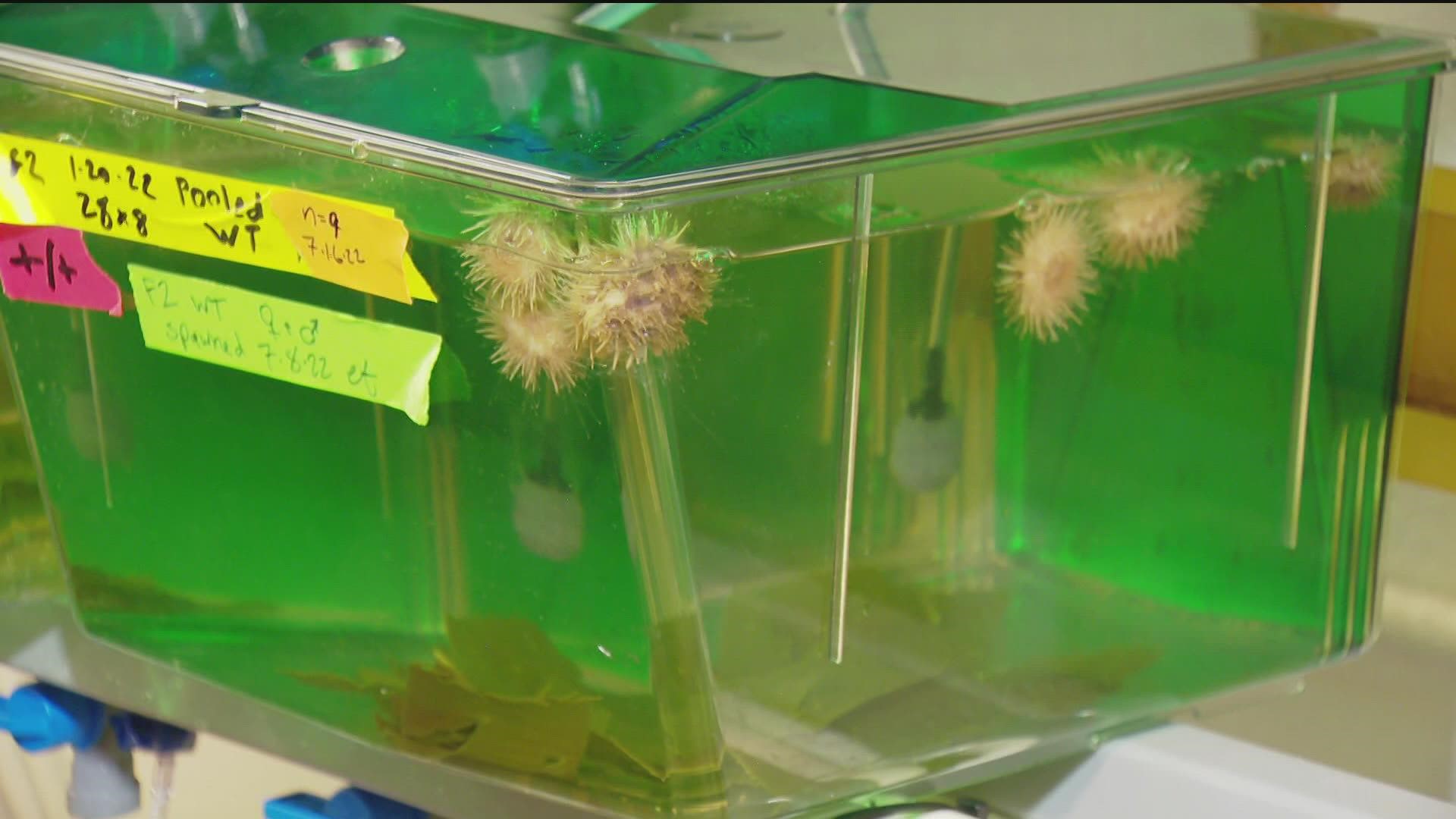SAN DIEGO — There are hundreds of chemicals out there that may be harmful to our health so, which ones should we avoid?
In this Earth 8 report, Neda Iranpour shows us how sea urchins are helping provide answers out of a lab in La Jolla.
Welcome to Hamdoun’s Lab: a place where first of its kind discoveries are being made by a group of hardworking researchers, led by Marine Biologist, Amro Hamdoun.
“So, the species we use for this kind of work is Lytechinus pictus,” said Hamdoun.
They’re also known as the painted sea urchin, native to southern California waters.
“They have a lot of eggs each, one will produce several million eggs so that’s more than enough for us to do this research in the lab,” said Hamdoun.
He says that’s their natural way which is why sea urchins have been used in research for about 40 years. And now for the first time in the U.S., Hamdoun’s Lab discovered how to create genetically modified sea urchins.
Kasey Mitchell, a lab assistant, shows us the urchins that came from the sea. You wouldn’t know the difference except for the labels on their tanks.
“We will fertilize those then hopefully 100s or 1000s of new sea urchin… those offspring will be genetically modified,” said Mitchell.
She says at Scripps Institution of Oceanography, they’re essentially setting a new standard for other labs.
“We’re making something that's like a fruit fly of the sea that you can study genetically,” said Hamdoun.
A fruit fly of the sea but with far more spines, that they use to move around.
They use two tentacles to search for food such as kelp, search for a mate, and find chemicals in the environment they should perhaps avoid, “(they have) very sophisticated sensory systems.”
By knocking out a protein called a drug transporter in the genetically modified sea urchins. Researchers can ultimately see why certain chemicals enter the human body and why some don’t.
Hamdoun tells CBS 8 there are about 85,000 chemicals out there and about 2-300 chemicals are found in our bodies. DDT is one example, “almost everybody will have DDT in their body and it’s from this legacy of DDT in the oceans.”
The dumping of barrels and barrels of the toxic pesticide decades ago still haunts many marine biologists, but Hamdoun’s Lab is helping make sure history doesn’t repeat itself, “change the way we use chemicals in the environment, so we are safe.”
And ironically, this was all a fallout of the pandemic.
“While a lot of people were making sourdough starters or arts and crafts, we were doing the same, we were making genetically modified sea urchins,” said Hamdoun.
That can ultimately determine what might be hazardous to our health, “understand fundamentally the way that life works.”
WATCH RELATED: Woman attacked by 'Rocky' the Monk seal in Kaimana Beach (July 2022)

